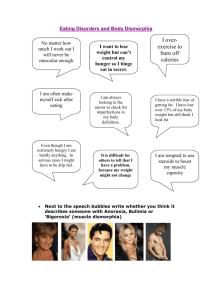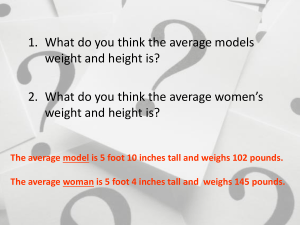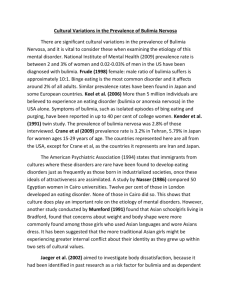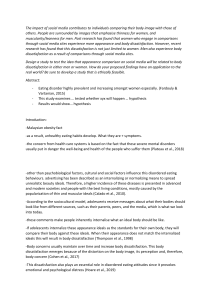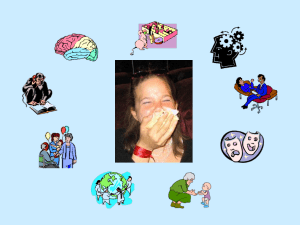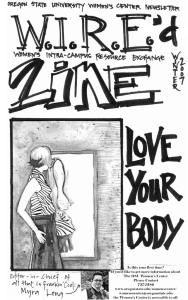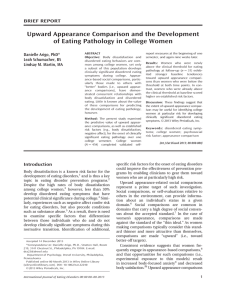Bulimia Quiz answers
advertisement
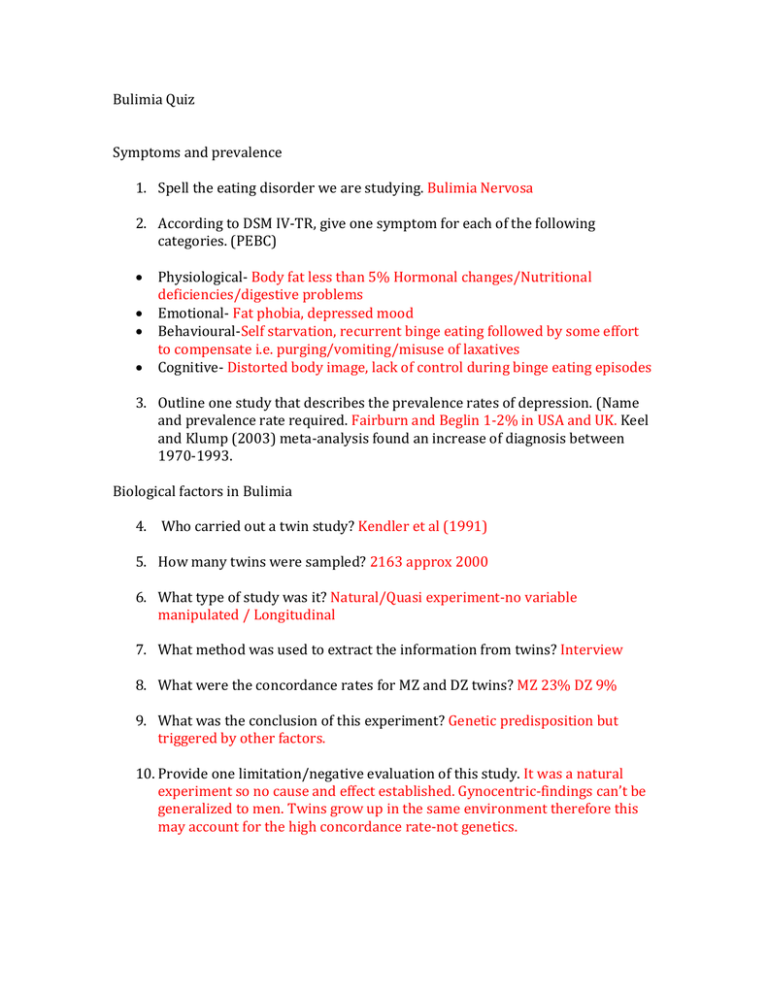
Bulimia Quiz Symptoms and prevalence 1. Spell the eating disorder we are studying. Bulimia Nervosa 2. According to DSM IV-TR, give one symptom for each of the following categories. (PEBC) Physiological- Body fat less than 5% Hormonal changes/Nutritional deficiencies/digestive problems Emotional- Fat phobia, depressed mood Behavioural-Self starvation, recurrent binge eating followed by some effort to compensate i.e. purging/vomiting/misuse of laxatives Cognitive- Distorted body image, lack of control during binge eating episodes 3. Outline one study that describes the prevalence rates of depression. (Name and prevalence rate required. Fairburn and Beglin 1-2% in USA and UK. Keel and Klump (2003) meta-analysis found an increase of diagnosis between 1970-1993. Biological factors in Bulimia 4. Who carried out a twin study? Kendler et al (1991) 5. How many twins were sampled? 2163 approx 2000 6. What type of study was it? Natural/Quasi experiment-no variable manipulated / Longitudinal 7. What method was used to extract the information from twins? Interview 8. What were the concordance rates for MZ and DZ twins? MZ 23% DZ 9% 9. What was the conclusion of this experiment? Genetic predisposition but triggered by other factors. 10. Provide one limitation/negative evaluation of this study. It was a natural experiment so no cause and effect established. Gynocentric-findings can’t be generalized to men. Twins grow up in the same environment therefore this may account for the high concordance rate-not genetics. Cognitive factors 11. Which researchers carried out a study to investigate body shape? Fallon and Rozin (1985) 12. Who were the participants and how many were used? Both sexes, undergraduates, 475 13. What task were the participants given? View nine pictures of different body shapes, indicate (1) most similar to their own (2) most like their ideal (3) most attracted to. 14. State 2 results for women. Current body shape was heavier than most attractive body shape, ideal body shape was thinner than the one they had chosen as similar to themselves 15. State 1 result for men. Men chose very similar figures for all 3 body shapes 16. What did the researchers conclude? Men’s perceptions helped them stay satisfied whereas women’s perceptions put pressure on them to lose weight. 17. How has schema theory been used to explain this eating disorder? Distorted weight related schema, due to high status given to looking thin and attractive. This is linked to low self-esteem. Sociocultural factors 18. Culturally speaking, where is a slimmer shape preferred? The west 19. What 2 factors did Levine et al find that 10-14 year old girls with disturbed patterns of eating patterns have in common? (1) reading magazines containing information about ideal body weight (2) weight related or shape related teasing or criticism by family. 20. Which researchers carried out a cross-cultural investigation of the relationship between body dissatisfaction and the development of the studied eating disorder? Jaeger et al (2002) 21. How many countries were represented? 12 22. Who were the participants? 1751 female medical and nursing students. 23. What information was taken from participants? Answer questions on body dissatisfaction. 24. Which countries had the highest rates of dissatisfaction? Northern Mediterranean (France/Italy) 25. What differences were shown between Western, Non western and those in the process of being westernized? Western=highest levels, Non western = lowest levels, in the process=intermediate levels. 26. What can be concluded? Body shape represented in the media of western countries could encourage dissatisfaction with body shape 27. Provide one limitation/negative evaluation of this study. A quasi/natural experiment that used culture as a variable. No cause/effect relationship as ‘culture’ was not controlled. Findings cannot be generalized to men. Reductionist as biological factors were not considered.




